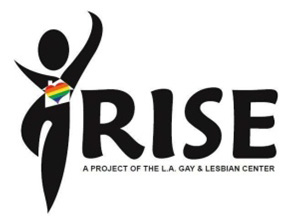New Reports Highlight Human Service Needs of Lesbian, Gay, Bisexual, & Transgender Populations
This is cross-posted in the U.S. Department of Health and Human Services’ Administration for Children & Families The Family Room blog. See the original post here.
By Tyler Hatch, Truman-Albright Fellow, Office of Planning, Research and Evaluation & Catherine Heath, Child and Family Program Specialist, Children’s Bureau
One challenge to addressing the human service needs of lesbian, gay, bisexual, and transgender (LGBT) populations is a lack of relevant research. Two new reports published by the Administration for Children and Families (ACF) describe what is known and discuss areas for future research related to the use of human services by LGBT populations.
This report explores our current understanding of the human service needs of low-income and at-risk LGBT people and their interactions with human services, especially those funded by ACF, and identifies important topics for further research in this area.
One of the areas the report addresses is the child welfare system. Key findings include:
- LGB youth are at increased risk for experiencing maltreatment and abuse compared to non-LGB youth.
- Sexual minority youth may experience more instability in foster care placements than do their heterosexual peers, possibly as a result of stigma.
- Lesbian and gay parents report perceiving barriers in the process of adoption related to legal restrictions, inadequate professional training for agency staff related to LGBT issues, or bias among adoption agency staff or other professionals.
Recognize, Intervene, Support, and Empower (RISE) Report
 In 2008, the Children’s Bureau began investing in the Recognize, Intervene, Support, and Empower (RISE) project, a multi-year, multi-million dollar effort to address the barriers to permanency experienced by LGBTQ (lesbian, gay, bisexual, transgender, questioning) youth in foster care. The project is located in Los Angeles County, California and operated by the Los Angeles Gay & Lesbian Center.
In 2008, the Children’s Bureau began investing in the Recognize, Intervene, Support, and Empower (RISE) project, a multi-year, multi-million dollar effort to address the barriers to permanency experienced by LGBTQ (lesbian, gay, bisexual, transgender, questioning) youth in foster care. The project is located in Los Angeles County, California and operated by the Los Angeles Gay & Lesbian Center.
The RISE work is a multi-pronged approach to serving LGBTQ youth. One critical component was a survey to determine the number of youth in L.A. County’s foster care system who identify as LGBTQ. This report- like others- indicates that LGBTQ youth are over-represented in the foster care system and that they fare worse than their peers. The survey found that approximately 19% or 1 in 5 youth in the L.A. County foster care system identify as LGBTQ. Many of these youth report feeling unsafe in their placements and higher rates of emotional distress. They are also more likely to have more placements and to be living in group homes.
The RISE project also developed an intentional model to address both the system-level and individual-level bias against LGBTQ youth in foster care. In addition to the survey, the RISE initiative includes:
- Outreach and Relationship Building pilots for creating an affirming environment;
- Educational materials to train and coach staff on LGBTQ competency, including the ability to talk about sexuality and gender with children and youth; and
- Care Coordination Teams using family search and engagement strategies informed by LGBTQ competencies to alleviate issues arising from heterosexism and transphobia.
LGBTQ youth in foster care need additional supports to ensure that they, like all youth, are placed permanently with a loving and supportive family and do not languish in foster care.
